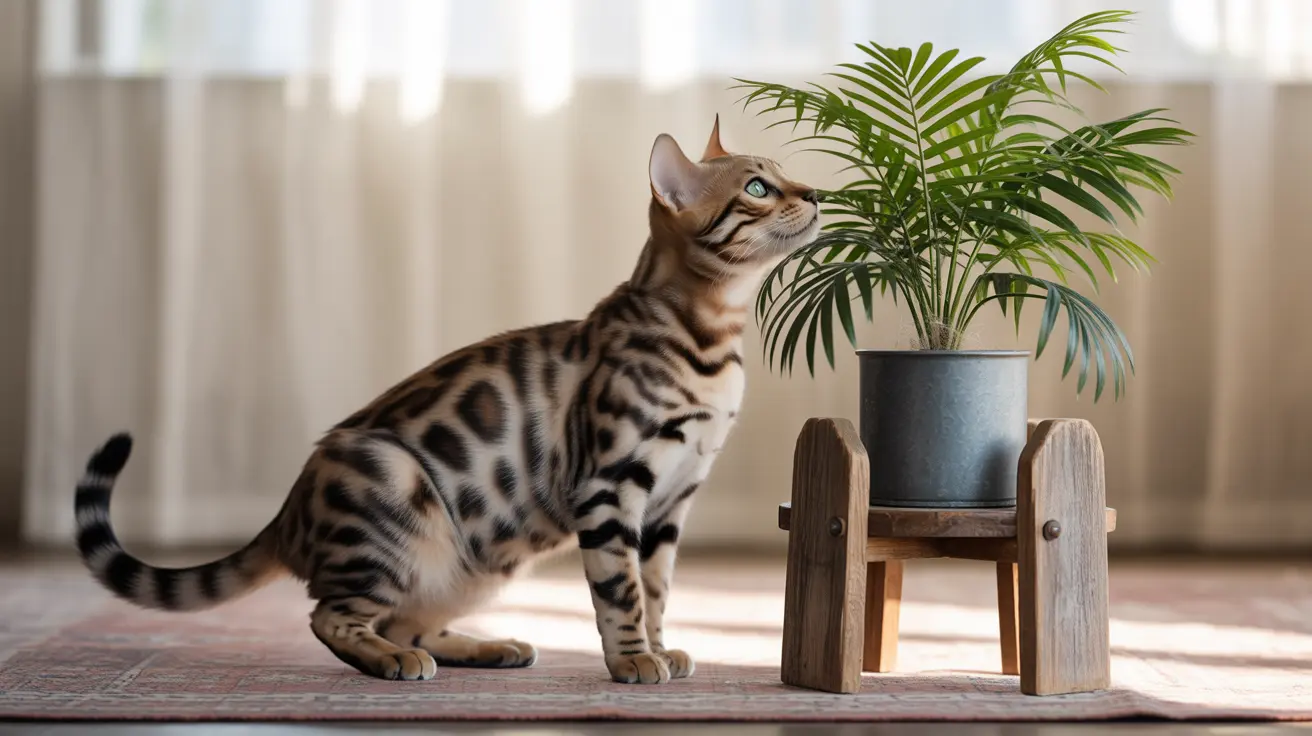If you're a cat owner considering adding some tropical flair to your home, you might be wondering about the safety of majesty palms. The good news is that majesty palms (Ravenea rivularis) are not toxic to cats, making them an excellent choice for pet-friendly households.
In this comprehensive guide, we'll explore everything you need to know about majesty palms and their interaction with cats, including safety considerations, potential symptoms to watch for, and tips for maintaining both your plant and your pet's wellbeing.
Understanding Majesty Palm Safety for Cats
Majesty palms are officially recognized as non-toxic to cats by the ASPCA and other veterinary authorities. Unlike some other palm varieties, such as the highly toxic sago palm, majesty palms contain no dangerous compounds that could harm your feline friend.
However, while these plants aren't poisonous, cats who nibble on majesty palm fronds may experience mild digestive issues due to the fibrous nature of the plant material.
Potential Effects of Majesty Palm Consumption
Although majesty palms aren't toxic, cats who consume large amounts of the plant may experience:
- Mild stomach upset
- Temporary vomiting
- Short-term diarrhea
- Decreased appetite
- Minor oral irritation
These symptoms typically resolve on their own and are caused by the physical properties of the plant rather than any toxic components.
Safe Plant Alternatives and Comparison
When considering pet-safe palms, several options are available:
- Majesty Palm (Ravenea rivularis) - Non-toxic
- Parlor Palm (Chamaedorea elegans) - Non-toxic
- Areca Palm (Dypsis lutescens) - Non-toxic
- Bamboo Palm (Chamaedorea seifrizii) - Non-toxic
Avoid sago palms at all costs, as they can cause severe liver damage and death in cats even with minimal consumption.
Prevention and Plant Protection
To maintain a harmonious environment between your majesty palm and cat:
- Place plants in elevated locations or hanging baskets
- Use plant stands to keep fronds out of reach
- Provide cat grass as an alternative for plant-curious felines
- Consider using deterrent sprays on or around the plant
- Ensure adequate environmental enrichment for your cat
What to Do If Your Cat Eats Majesty Palm
If you notice your cat has been chewing on your majesty palm, follow these steps:
- Monitor your cat for any unusual symptoms
- Ensure access to fresh water
- Contact your veterinarian if symptoms persist or worsen
- Consider relocating the plant to prevent future incidents
Frequently Asked Questions
Are majesty palms toxic to cats if ingested?
No, majesty palms are not toxic to cats. They are officially classified as non-toxic by the ASPCA and other veterinary organizations.
What symptoms might a cat show after eating parts of a majesty palm?
While not toxic, cats may experience mild gastrointestinal upset, including temporary vomiting or diarrhea, if they consume large amounts of the plant's fibrous material.
How can I prevent my cat from chewing on my majesty palm?
Place the plant out of reach, use deterrent sprays, provide alternative plants like cat grass, and ensure your cat has plenty of environmental enrichment.
How do majesty palms compare to other palms like sago palms in terms of cat safety?
Majesty palms are completely non-toxic, while sago palms are extremely dangerous and can cause severe illness or death in cats. Always verify plant species before bringing them into your home.
What should I do if my cat eats a large amount of majesty palm leaves?
Monitor your cat for signs of digestive upset and ensure they have access to fresh water. If symptoms persist or worsen, contact your veterinarian for guidance.
Conclusion
Majesty palms offer a safe and attractive option for cat owners looking to add tropical greenery to their homes. While consumption of the plant may cause mild digestive issues, there's no risk of serious toxicity. With proper placement and preventive measures, cats and majesty palms can safely coexist in your home.
Remember to always supervise your pet's interaction with any houseplant and consult your veterinarian if you have specific concerns about your cat's plant-eating behavior.






